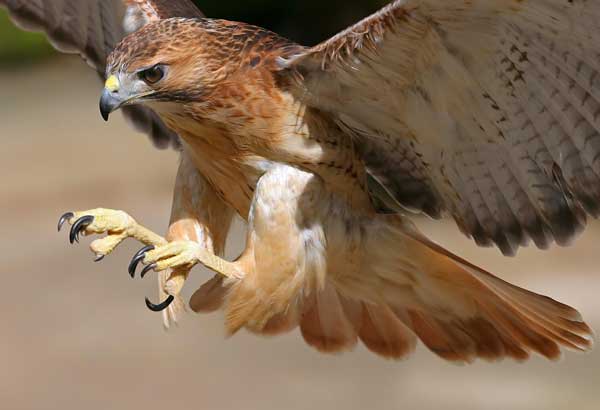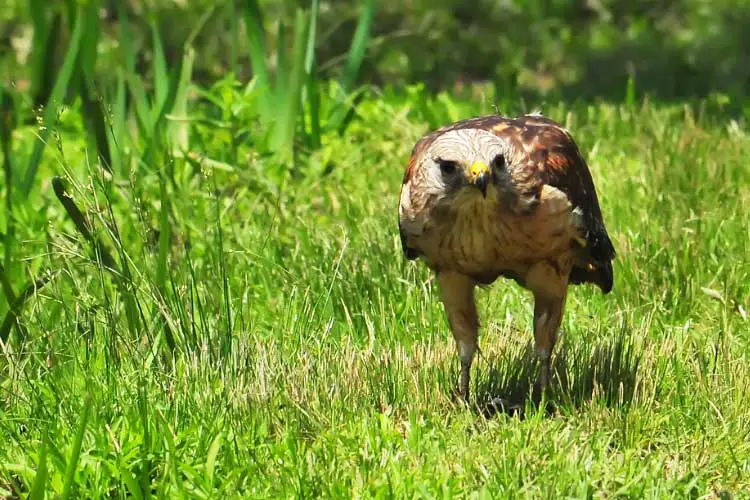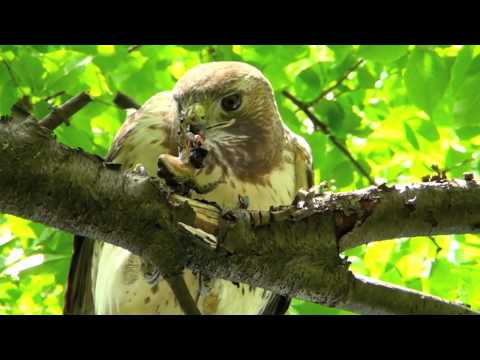Learning about Hawks is fascinating as they are one of the most intelligent species in the sky. However, there is controversy about whether hawks eat frogs or not.
So, do hawks eat frogs? To quickly summarize, hawks that dwell near ponds, rivers, or other bodies of water are known to eat frogs as a preferred food. Nonetheless, Red-shouldered hawks and American kestrels are the most well-known for their frog-eating habits.
To learn more about hawk’s frog-eating hobby, including how they do it and which ones do it, skim through the article. Moreover, you will not believe what the Hawks do to ensure their survival or how they utilize their heads to capture the amphibian with excellent reflexes.
Let’s learn it from the Hawk’s specialist!
Do Hawks Eat Frogs?
Small animals that are also lightweights, such as frogs and bats, attract the interest of most hawks. However, if we declare that frogs are common prey, we are not completely accurate.
Even though any hawk will eat any small animal because it is their primary food source, there are two hawks in particular who are known to eat frogs. They are Red-shouldered hawks and American kestrels, and they both live near water.
As mentioned before, their place of living creates a big impact on their diet. While most hawks in the desert would prefer water snakes, lizards, or even reptiles, a red-shouldered hawk would choose frogs or any other amphibian over anything.

However, there are toxic frogs that may be found in wild aquatic areas that can kill an individual hawk and perhaps other birds within a matter of minutes. Thus, the hawks’ intelligence is noted. The hawks can tell the poisonous frogs apart from the non-poisonous ones by looking at their colors and markings.
As a result, even when they are starving, the red-shouldered hawks and American kestrels will not eat these brightly colored venomous frogs. On the other hand, the other frog-eating birds will be unable to recognize a deadly frog and will perish.
Despite the fact that there are over 200 types of hawks, most of them cannot be said to be interested in frogs. It’s primarily related to their living arrangement and eating habits.
Are Hawks Fast Enough For Frogs?
You might be asking that frogs are such reactive creatures that catching one requires incredible speed. Furthermore, they are quick enough to adapt to these birds of prey and quickly shift themselves to a new location with a few leaps.
That is precisely where you are mistaken. You already know that hawks are swift, but did you know that they can reach speeds of 190 kilometers per hour? On the other hand, frogs can leap and reach speeds of up to 50 mph. As you can see, the difference is significant, and the frog would be in the bird of prey’s jaws before the frog could even see the prey.

Furthermore, birds of prey have a significant edge in terms of eyesight. Their vision is eight times that of a regular human being. On the other hand, frogs can only see clearly in low light and have a vision of fewer than 180 degrees, making them an ideal target for predators. Secondly, amphibians have poor vision and are among the animals with the lowest vision.
How Does A Hawk Kill Frogs?
Hawks utilize a variety of ways to catch their prey. However, catching a frog requires the least amount of work of any of them. They can get them in their hands as soon as they are hungry and need something to eat because of their incredible speed and eyesight. Nonetheless, let’s take a closer look at their most common frog-catching technique.

Step 1: Observe
When these amphibian-eating types of hawks become hungry, their observation mode kicks in to keep an eye out for prey. As a result, they begin the observation process, flying in the open sky at a considerable height, or just from tree branches to observe whether any of the frogs are vulnerable. They can readily track amphibians from a long distance due to their excellent eyesight.
Step 2: Down and at an angle
Once the hawk has located its prey, the hawks have two options for capturing it. The first is to fly directly over the frog and swoop straight down. The second option is to go hunting on the ground. The hawk descends a short distance from the frog and then soars straight at a 90-degree angle with incredible speed.
Step 3: Catching process
Since wild hawks employ one of the two approaches, it’s time to grab the frog before it even tries to jump properly, and because the hawk is moving faster, it’s more difficult to perform a turn. As a result, the hawk always emerges from the frog’s behind. On the other hand, frogs have incredibly inferior hearing that they can only use to hear other frogs.
Step 4: Away and above
This one is rather straightforward. When the hawk gets close enough to the frog, it immediately uses its toes to capture it. Hawks have the benefit of having three toes facing forward and one pointing backward, which is an excellent design for getting a good grasp on any prey.
They make spin and soar above as soon as they gain a hold of the target. When it comes to eating, the hawk takes the frog to a pleasant location and happily devours it.
Which Hawks Eat Frogs?
Out of 200 species of hawks, there are several type of hawk that lives near watery areas. They include Peregrine Falcon, California Condor, Northern Goshawk, Cooper’s Hawks, and many more. However, they are not the quiet type to have specifically frogs for their dinner and rather choose any other amphibian.
However, hawks that prefer frogs over amphibians are quite a few, and they are Red-shouldered hawks and American kestrels. Let’s get to know them a little better here.
Red-shouldered Hawks
As the name says, their red-colored wings are the sole way to identify them from other hawks. Even though they are brightly colored, they have a typical black tail. Unlike most hawks, they are not particularly large and may be found in the medium hawk category.

When it comes to their habitat, they prefer to live in both the woods and rivers. Even those who dwell in the woods are more likely to seek amphibians in the forest than worms, snakes, or medium-sized mammals. They can readily transfer positions due to their high speed of movement. They are often found on the eastern side of North America and along the coast of California.
American Kestrels
The American Kestrel is more on the gentler side rather than the dangerous ones. They are petite in size and have a charming appearance. On the other hand, Kestrels are the most colorful of all the hawk species. Their blue-gray rounded wings, orange tail, and beauty and purity in their face help to recognize them.
Nonetheless, American Kestrels may be found mostly in parks with aquatic environments. Small types of birds, reptiles, and amphibians are the most common hawks’ foods they consume.
FAQ
Now that we have learned everything about these hawks and their lifestyle lets a look at some frequently asked questions asked by people.
There is a possibility that hawks may eat their prey alive, and only happens when the prey tries too hard to get away from the hawk. As a last resort, a hawk would definitely eat that alive.
If a hawk doesn’t eat a frog, there are a wide variety of common birds that will do the job for it. Some of them include crows, seagulls, ducks, swans, hawks, owls, and many species of American birds.
Conclusion
To conclude, with the speed and vision of a hawk, killing an amphibian such as a frog, who is also really dull, is a piece of cake for them. So yes, the answer to whether do hawks eat frogs or not is a yes. American Kestrel and Red-shouldered are the ones that do like frogs in their diet.
On the other hand, a hawk catching a frog is clearly overkill owing to the frog’s lackluster powers. The hawk simply has to wait for a frog to appear in his field of view, and the rest is taken care of effortlessly.
Do you want to know if hawks eat ducks or pigeons? Read our articles about it to learn more.










